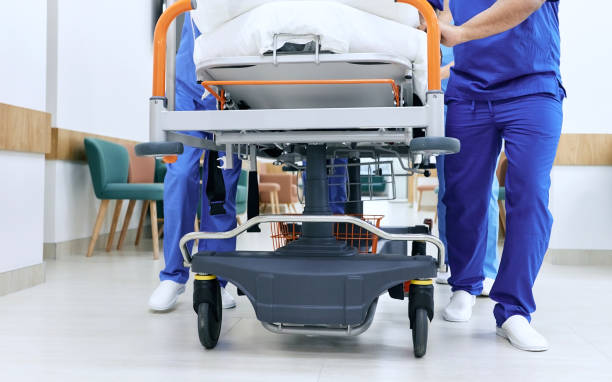Enhancing Emergency Department Efficiency: Key Strategies for Healthcare Executives in 2024

Enhancing Emergency Department Efficiency: Key Strategies for Healthcare Executives in 2024
Introduction
Emergency Departments (EDs) are critical components of healthcare systems, often serving as the first point of contact for patients in acute medical situations. In 2024, as patient volumes continue to increase and the demand for rapid, effective care intensifies, healthcare executives face the challenge of enhancing ED efficiency. This blog outlines strategic approaches to improve operations, reduce wait times, and elevate patient care in emergency departments.
The Importance of ED Efficiency
Efficient ED operations are essential not only for patient satisfaction and outcomes but also for the overall performance of healthcare facilities. Reducing bottlenecks and improving throughput can significantly decrease wait times, prevent overcrowding, and reduce stress on both patients and staff.
Strategies for Optimizing Emergency Department Efficiency:
- Streamline Triage Processes:
- Implement or refine triage protocols to ensure patients are assessed and categorized based on urgency more quickly and accurately. Consider advanced triage tools that utilize AI to predict patient acuity and streamline workflow.
- Enhance Staffing Models:
- Develop dynamic staffing models that adjust based on real-time ED volume and acuity data. Use predictive analytics to forecast high-demand periods and plan adequate staffing to handle surges effectively.
- Adopt Lean Management Principles:
- Apply lean management techniques to eliminate waste in the ED, streamline patient flow, and improve resource utilization. This could involve redesigning physical layouts to reduce movement and implementing standardized work procedures.
- Utilize Point-of-Care Testing:
- Expand the use of point-of-care testing in the ED to accelerate diagnosis and treatment. Rapid tests can significantly decrease turnaround times for critical results, facilitating quicker decision-making and patient throughput.
- Invest in IT and Telemedicine Solutions:
- Enhance information technology infrastructure to support efficient data management and communication. Integrate telemedicine to offload non-critical cases or provide consultations, reducing physical crowding.
- Focus on Patient Communication:
- Improve communication with patients regarding wait times, treatment processes, and care plans. Keeping patients informed helps manage expectations and improves overall satisfaction.
- Implement Fast Tracks for Minor Injuries:
- Establish fast-track lanes for patients with minor injuries and ailments. This can help segregate less urgent cases from severe ones, improving the flow and allocation of resources.
- Review and Optimize Discharge Procedures:
- Streamline discharge processes to reduce length of stay and free up space more quickly. Automate discharge documentation and ensure follow-up care arrangements are made efficiently to prevent delays.
Challenges in Enhancing ED Efficiency:
- High Patient Volumes: Managing the sheer volume of patients, particularly during peak times or seasonal outbreaks, remains a significant challenge.
- Resource Limitations: Limited resources, including staffing, space, and equipment, can hinder efforts to improve efficiency.
- Variability in Patient Acuity: The unpredictable nature of emergency cases can complicate workflow standardization and efficiency efforts.
Conclusion
Improving the efficiency of emergency departments is crucial for delivering high-quality emergency care and maintaining the sustainability of healthcare systems. By adopting these strategies, healthcare executives can enhance operational efficiency, reduce wait times, and ultimately improve outcomes for patients in critical situations.
Call to Action
Healthcare executives should conduct a thorough analysis of their current emergency department operations to identify inefficiencies and bottlenecks. Engaging with ED staff, leveraging technology, and implementing process improvements are essential steps toward building a more efficient and responsive emergency department.



